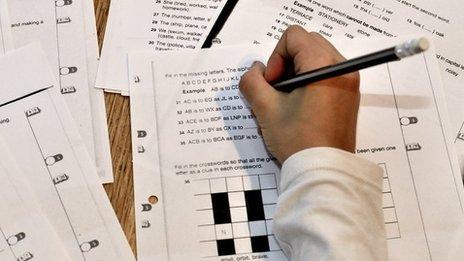Portstewart schoolchildren build vehicles and relationships
- Published
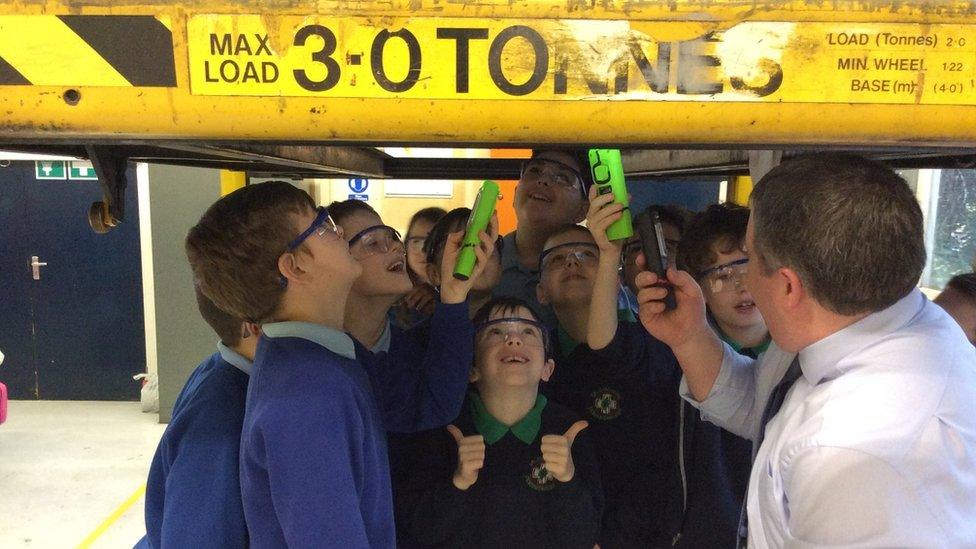
Pupils from Portstewart Primary School and St Colum's Primary School worked together to build their own vehicles
Two County Londonderry schools have been taking part in an especially 'moving' shared education project.
All 428 pupils in Portstewart Primary School and St Colum's Primary School have been working together to design and create their own vehicles.
The results of their work are being exhibited at Flowerfield Arts Centre in the town from 30 March - 1 April.
"Marvellous Movers" is one of only six projects across the UK shortlisted for a 2017 science award from Rolls Royce.
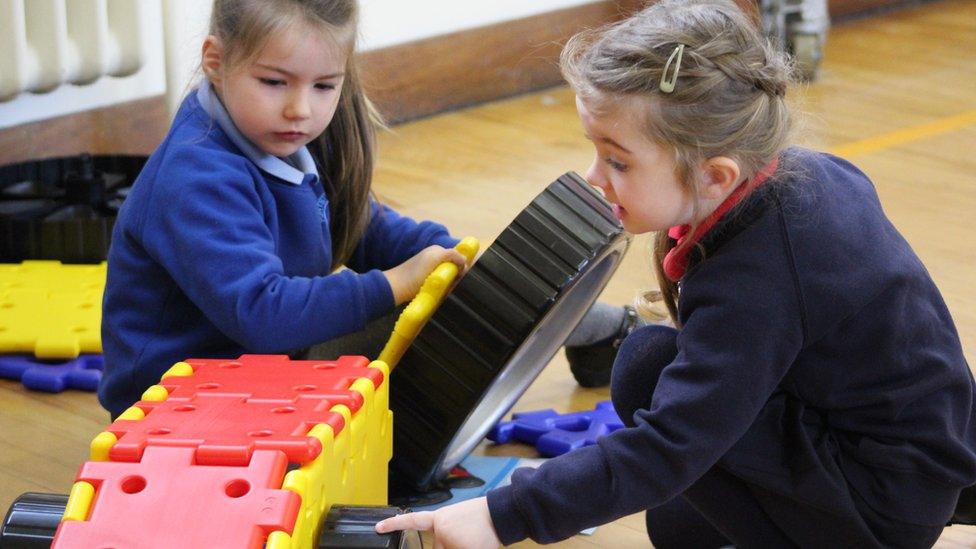
The schools are located a short distance apart but had never shared lessons before
Grainne McGoldrick, who teaches in St Colum's, was one of the school staff who came up with the idea.
"The two schools are only five minutes walk away from each other but we'd never collaborated in this way before," she said.
"We were both looking at different aspects of science, technology, engineering and maths (STEM) education and decided to work together."
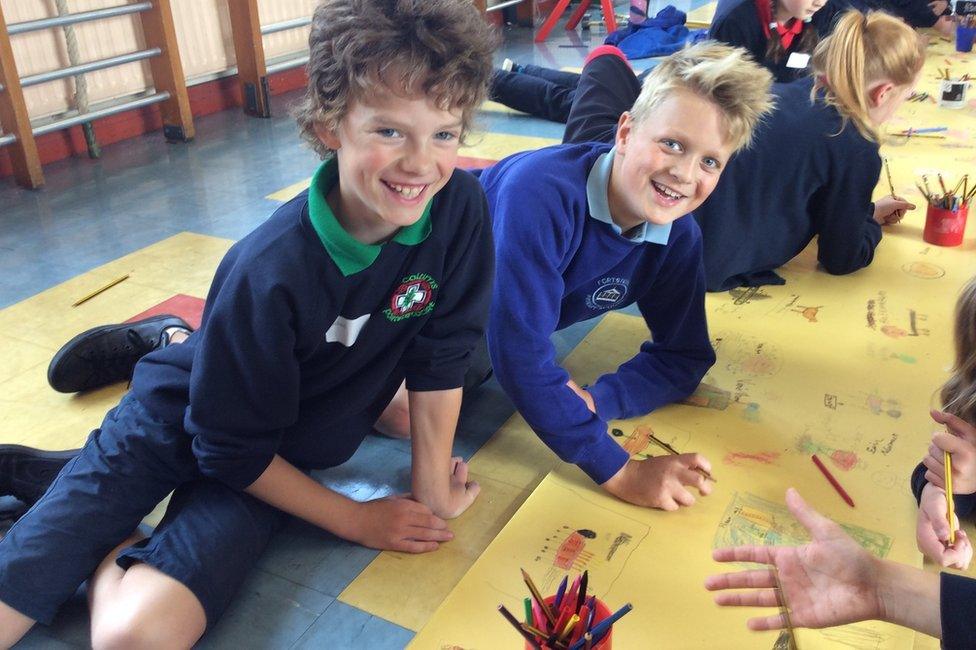
Teachers said their pupils became totally comfortable in each other's schools
Since September 2016, pupils from primary one class to primary seven have been coming together to make vehicles from recycled and reusable materials.
Senior pupils, from primary five to primary seven, were given the additional challenge of powering their vehicles using a renewable form of energy.
'Fairy rocket'
As a result, the children created a range of vehicles which could travel on land, sea and air, according to Portstewart Primary School governor Heather Quiery.
"There's everything from a pink fairy rocket with wings and a gold star, to a hybrid vehicle which is solar-powered," she said.
"One of the primary seven vehicles has a moving axel which is technically tricky.
"Some of the children also learned about circuits and switches in order to translate solar power into energy for their vehicles.
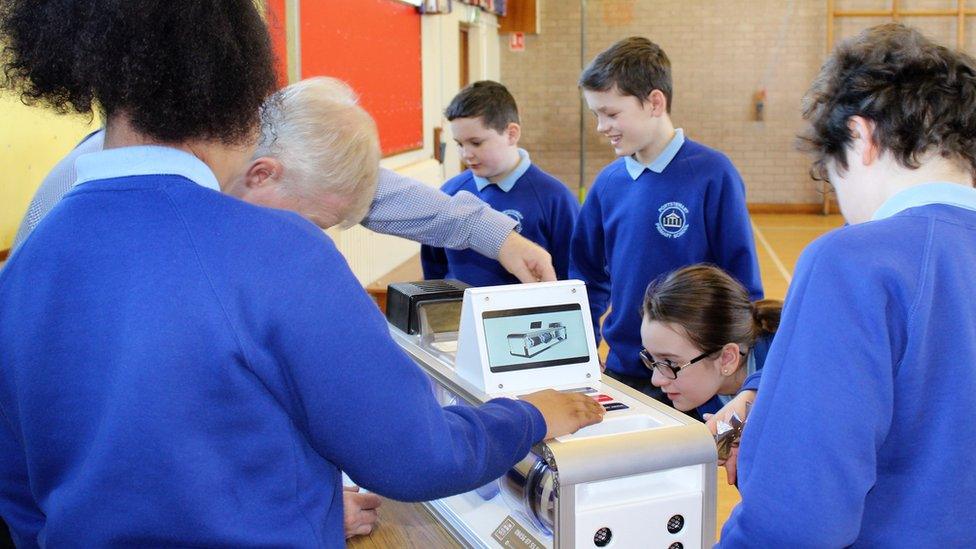
Older pupils' faced more complicated design challenges
"It ended up with children walking from one school to the other most days of the week."
Wider benefits
And, according to Grainne McGoldrick, they learned about much more than science.
"Having to work as part of a group was a big thing for many of the children," she said.
"At the start, a lot of the children said they found it difficult to compromise.
"It's also relatively easy to draw what you want to create, but actually building it is very different.
"Many of their original designs looked nothing like the completed vehicle as they had to modify things to see if they'd actually work."
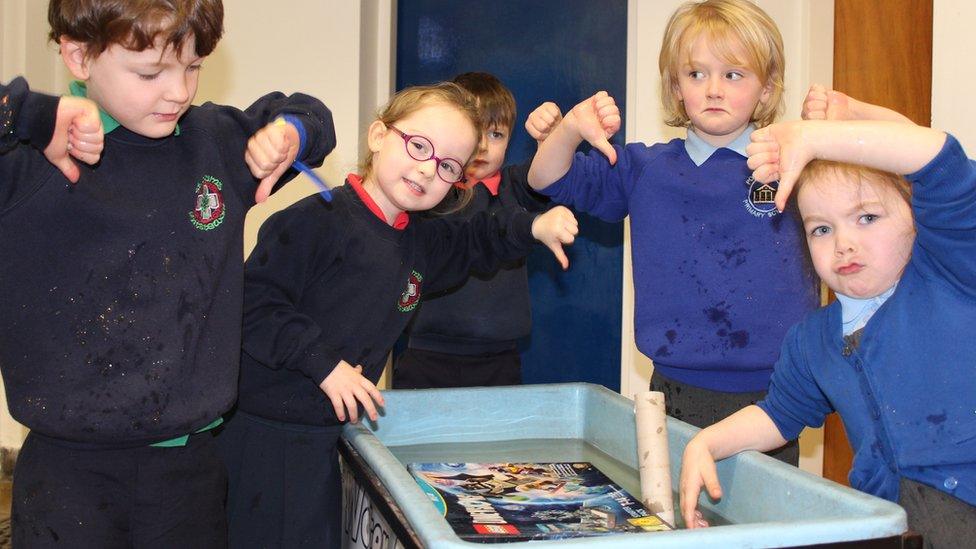
The children tried to create a range of vehicles which could travel on land, sea and air
Ms McGoldrick said that the pupils were now totally comfortable in each other's schools, and that goes for the teachers too.
"We share examples of good practice and planning and we want to keep the collaboration going," she said.
And there could be wider benefits for the planet too, according to Ms McGoldrick.
"The project has encouraged all pupils to think about recycling, renewable energy and more environmentally friendly forms of transport."
"The future is definitely green for our children."
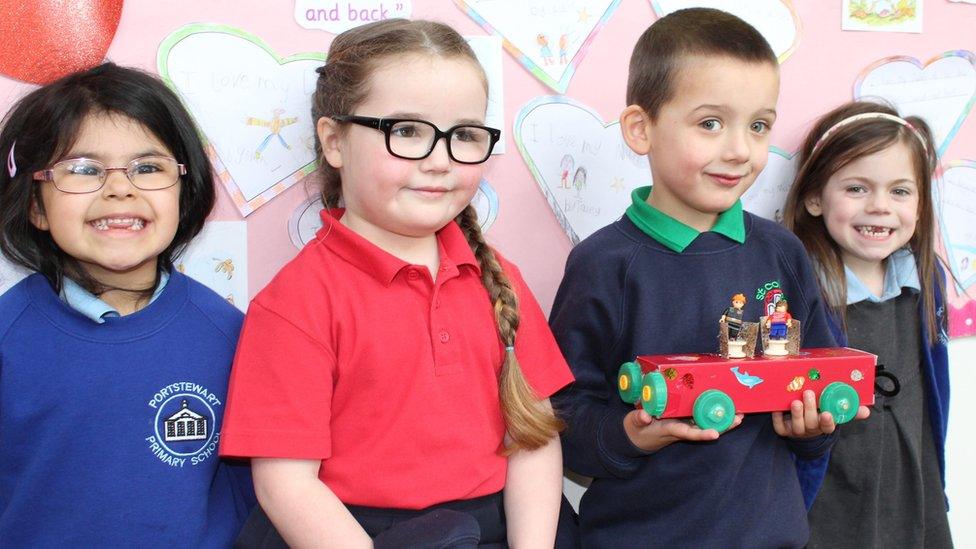
The pupils had to learn to work as a group to achieve their finished products
- Published10 March 2017
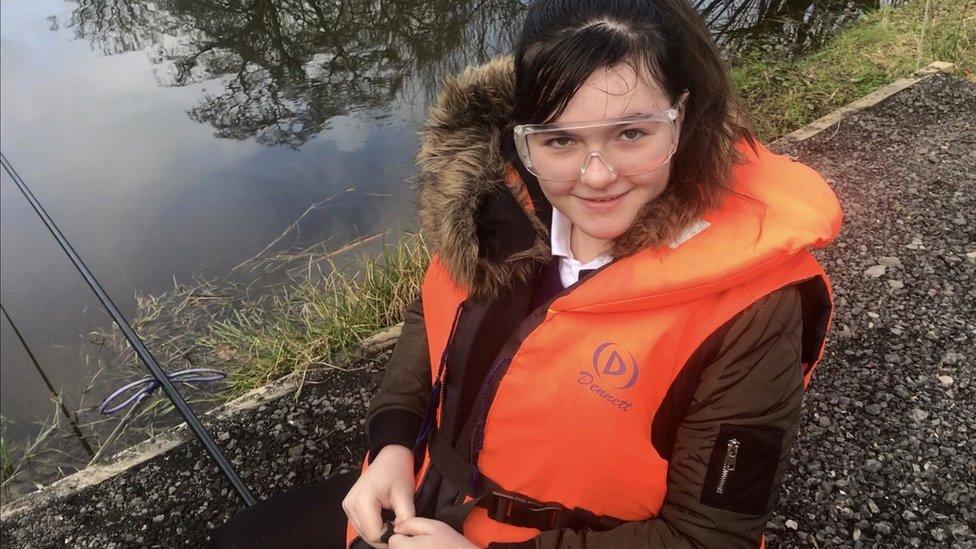
- Published16 September 2015
